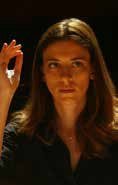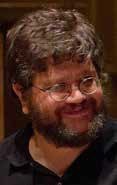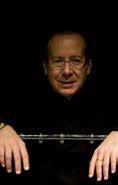Italian Composers Now
By Federico CAPITONI
It is not easy to give an overview of contemporary music in Italy. Throughout academies and generations, the developmental timeline is extremely diverse. But there is one trait that is common to all composers, even the most daring and innovative: a constant connection to tradition. Every experiment, each new thing, takes its cue from the classical teachings of the wide-ranging European school – including avant-garde – from which no one wants to completely free themselves. Perhaps because it is impossible: even if you want to escape by “killing the root”, the assumption is that there is always a root to eliminate. Obviously, there are more highly-valued Italian composers than those listed below, but this gallery offers an almost complete spectrum of styles, schools and age.
Francesco Antonioni (1971)
Perfectly comfortable in the present age, Francesco Antonioni is a composer who uses all means, language and technology which he has at his disposal. A lover of short forms, which are also very modern, he always tries to say everything in the most concise form possible, whether in compositions or orchestral performances. The use of multimedia and the inclusion of a symbolic performer in the compositions was an original idea. This is the case of Benché ’l parlar sia indarno, for orchestra and conductor, of the Chatopera for musicians, DJs and performers, or Musica al telefono for wind quintet and narratives.
Giorgio Battistelli (1953)
Battistelli is one of the Italian composers by which new generations set their standards. Gifted with a wonderful imagination that works overtime to find original rhythmic solutions, he has a strong propensity for the theater. He has recently transformed some Italian neorealism cinematic masterpieces to the theater, such as Miracolo a Milano and Divorzio all’italiana. His best known work is certainly Experimentum Mundi (1981), a symphony for construction tools (chisels, planes, mallets, etc.) with which Battistelli explores the possibilities of rhythm through the “concrete” sounds.
He is also a music organizer and artistic director. Among these events is his own festival Play-It, now in its third year, which takes place in Florence and involves four days of concerts by contemporary Italian authors, some of whom are often premiering.
Carlo Boccadoro (1963)
This composer from Marche is among those who, more than others, demonstrates the current direction of contemporary music. An eclectic musician, Boccadoro’s combinations of various styles in his compositions has gained him a wide audience. His artistic history can be divided into two phases: the first is the neo-tonal, contrary to avant-garde, and the second is his current one, in a sense renewing his search for less conventional means. He studied in Milan, where he majored in piano and percussion instruments and became a prolific composer. He is also the author of several books and director of a major ensemble, “Sentieri Selvaggi”, which, thanks to a solid schedule of concerts has helped the spread of contemporary music, especially those of America and new compositions by young Italians.
Nicola Campogrande (1969)
With thirty recordings and hundreds of scores already to his name, Nicola Campogrande is one of Italy’s most promising composers. Also known internationally, he has been commissioned more and more by theaters of great importance. This success comes despite not being part of the established classic music scene. Campogrande is among those who have made the choice of total compositional freedom, liberating himself from an obligation to be stylistically reminiscent of the great masters. He has remained true to the common concept: a composer must write the music he likes. Campogrande writes for orchestra and quartet, has written orchestral collaborations with “pop” musicians, and composed soundtracks for art and film exhibitions. He is also a radio host and director of the magazine Sistema Musica, a journal of musical events in the city of Torino.
Cristian Carrara (1977)
Carrara is among the most unique composers on the contemporary scene because he has chosen a very personal path: that of “sacred music” and consonance. His music has nothing experimental about it, does not search for acoustics and harmonies, but rather flows from an intent to communicate. In fact it is not only widely-liked and appealing to all audiences, but performed by many musicians. Its distinctive quality is that it is sacred music, but without the words, so that the spiritual dimension is therefore expressed only through the structure of its sounds. Carrara uses this approach whether it is for an orchestra (some representative pieces are on the album Liber mundi) or piano; whether for the theater or pop songs. His name is also linked to the song by Antonella Ruggiero, Canzone tra le guerre, a contestant at the Festival of Sanremo.
Silvia Colasanti (1975)
Born and trained in Rome, Silvia Colasanti is the most-performed Italian composer. She has won numerous awards and last year was invested with the title of Chevalier by the President of the Italian Republic. She has studied under such teachers and masters as Azio Corghi, Pascal Dusapin and Wolfgang Rihm. Her writing, clear and technically impeccable, is expressed mainly through string instruments which often bring to mind the sounds of Ligeti and Penderecki (a classic example is her Sentieri di sangue for string orchestra). Top interpreters are racing to play her pieces: Capriccio a due is a violin duet written on commission of Salvatore Accardo. Her theatrical production portfolio is rich, and include award-winning works appreciated by critics and audiences such as La metamorfosi (by Kafka) and the productions for children, Il sole, di chi è? and Le avventure di Tom Sawyer.
Ivan Fedele (1953)
Trained at the School of Azio Corghi and Franco Donatoni, Ivan Fedele has created a very personal repertoire; however deliberately recognizable as having roots in a concept of the great masters of avant-garde: the awareness in music. Each of his compositions always has an underlying artistic concept that is more than just entertainment: it is as if he would merge every acoustic measure into one dimension of comprehension of the wider world of sound. His musical portfolio is very diverse in its nature and instrumentation. His Boréales and Australes for piano are very fascinating, where Fedele explores the timbre of the instrument through various means such as resonances. The echoes and spatial arrangement of the music play a large part in his productions, inspired by a philosophical concept of phenomena that plays into orchestral scores like those for solo instrument. Among his most important works are: Ali di cantor, Antigone, Duo en résonance. He is currently director of the Venice Music Biennale.
Virginia Guastella (1979)
A young composer from Palermo and winner of several awards as a writer and performer, Virginia Guastella has mastered the most varied compositional styles. She engages easily and smoothly in symphonic, vocal or electronic music (which she also teaches at the conservatory), and at the same time writes jingles for television. An accomplished pianist, she has also brought about, together with drummer Claudio Trotta, the project “Duo improbabile”, with whom she produces concerts that give a wink to both progressive and jazz rock. In 2008, with Pax virginis (cantata for baritone and orchestra), she won the composition competition “Strumenti di Pace” in Rovereto.
Ennio Morricone (1928)
The most world famous living Italian composer’s name is linked to the cinema, but this is only the most evident aspect of his art. Morricone is also the author of what he calls “absolute music”, namely for concert, not written to accompany images. Graduating with Goffredo Petrassi, the Roman composer has written for various instruments and for orchestra, according to a very academic style in which, however, you can always see his penchant for melody. His choral music compositions are particularly appreciated and include unique experiments such as Echi (for choir and violincello ad libitum). Morricone, who has a long and rich career, is also among the members of Nuova Consonanza, an association for contemporary music begun in 1959. Morricone’s contribution to Italian pop music is also notable, having created some of the most important arrangements of many hit songs of the 60s.
Salvatore Sciarrino (1947)
Among the deans of our music, he is the most famous Italian composer abroad. Self-taught, over the years he has formed a very personal style that has been largely influential. In particular, his innovations are in the usage of the voice, in the 20th century known as one of the most difficult stages in which to try. After Schoenberg’s Sprechgesang, his idea of singing as “breathing” was the last great development in vocal music. In a more generally sense, Sciarrino calls his music “liminal”, in other words on the threshold of something else, for the most part silence: the long pauses, the abyss of the “pianissimo” only skims the dimension of the silence, never touching it fully, in a game of perception that stimulates the listener. His portfolio of compositions is wide-ranging over almost all genres: symphonic music, chamber, the theater. Some of his most fundamental works are Aspern, Luci mie traditrici, Da gelo a gelo, Lohengrin. Many of the lyrics that Sciarrino puts to music are drawn from Japanese poetry, and much of the instrumental music is a personal and unusual reworking of the great writers of the past, especially Mozart, Gesualdo and de Machaut.
Marco Stroppa (1959)
He is one of the most important influential composers for electronic music. He studied in Venice with Alvise Vidolin, and then at the IRCAM in Paris, after having also studied computer science, artificial intelligence and cognitive psychology. For Stroppa, electronics is not a trivial means for making music, but a way of thinking and conceiving, as the use of electronics comes together to create the music at the structural level. The concept at the basis of his pursuits is the projection of sound in space and, in this sense his most representative works are Traiettoria (for piano and electronics) and Spirali (for string quartet and electronics).
About the Author
 (b. 1980, Rome), music critic and musicologist, writes for the national newspapers La Repubblica and Il Sole24Ore. He contributes to the most important Italian music magazines such as Classic Voice and Amadeus. He also edited Rondò, a classical and jazz music magazine. Creator and host of radio programs about music for Radio Rai, Radio Città Futura and Radio Vaticana, he is currently the music manager of artivu. tv (a web TV dedicated to music, theatre and dance). Graduated in Mass Communication and in Philosophy from La Sapienza University of Rome, he teaches History and Sociology of Music and is the author of several books on music: Copio dunque sono (2009); Guida ai musicisti che rompono (2011); La verità che si sente (2013).
(b. 1980, Rome), music critic and musicologist, writes for the national newspapers La Repubblica and Il Sole24Ore. He contributes to the most important Italian music magazines such as Classic Voice and Amadeus. He also edited Rondò, a classical and jazz music magazine. Creator and host of radio programs about music for Radio Rai, Radio Città Futura and Radio Vaticana, he is currently the music manager of artivu. tv (a web TV dedicated to music, theatre and dance). Graduated in Mass Communication and in Philosophy from La Sapienza University of Rome, he teaches History and Sociology of Music and is the author of several books on music: Copio dunque sono (2009); Guida ai musicisti che rompono (2011); La verità che si sente (2013).










